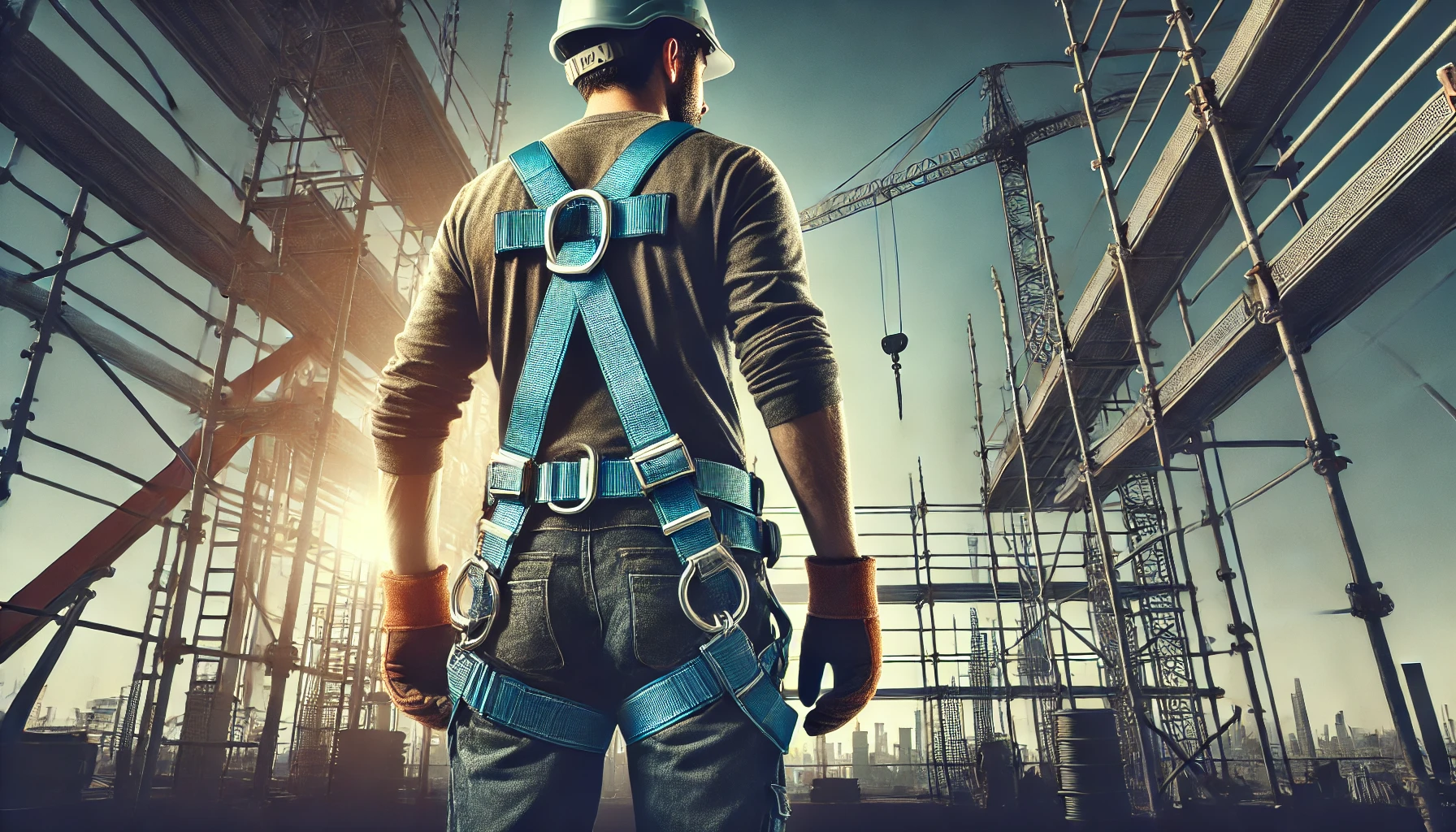When it comes to working in high-risk environments like construction sites, warehouses, or industrial jobs, safety should always be the number one priority. One of the essential tools for ensuring this safety is the safety harness. This critical piece of equipment has saved countless lives, but choosing the right one and understanding how it works can be daunting. In this guide, we’ll explore everything you need to know about safety harnesses in easy-to-understand language.
What is a Safety Harness?
A safety harness is a protective device worn by a person to prevent falls from heights. It typically includes straps, buckles, and other components that distribute the force of a fall across the body to minimize injury. Safety harnesses are commonly used in industries like construction, roofing, window cleaning, and even recreational activities such as rock climbing.
Why Do You Need a Safety Harness?
Let’s start with the obvious reason—it saves lives. Falls are one of the leading causes of workplace injuries and fatalities. A safety harness acts as a barrier between you and serious injury by securing you in place and preventing falls. Beyond the personal safety aspect, using a harness is often a legal requirement in many industries. Regulatory bodies like OSHA (Occupational Safety and Health Administration) enforce strict guidelines on the use of safety harnesses, making them not just essential for your well-being but also for compliance with safety laws.
Benefits of Using a Safety Harness
- Prevents Fatal Falls: The most important function of a safety harness is to stop a fall, reducing the risk of serious injury or death.
- Distributes Force: In the event of a fall, a harness spreads the shock across your body to minimize injury.
- Improves Mobility: Many modern harnesses allow for a wide range of movement, so you can work without feeling restricted.
- Legal Compliance: In many industries, using a harness is a mandatory requirement, ensuring your workplace meets legal safety standards.
Key Components of a Safety Harness
A safety harness is made up of several parts, each playing a crucial role in keeping you safe.
1. Dorsal D-Ring
The D-ring is the attachment point located at the back of the harness. It’s where the safety lanyard or lifeline is connected. This part bears the most force in case of a fall, so it’s crucial to check its durability regularly.
2. Straps
These are the main parts of the harness that wrap around your legs, shoulders, and torso. The straps are designed to distribute the force of a fall across different areas of your body.
3. Buckles
Buckles are the fasteners that secure the harness on your body. There are different types of buckles such as quick-connect, tongue buckles, and friction buckles, each offering a different level of convenience and security.
4. Lanyards
A lanyard is the connection between the harness and an anchor point. It can be either shock-absorbing or self-retracting, designed to limit the distance you can fall.
5. Anchor Point
The anchor point is a stable location to which your safety harness is attached. This could be a permanent fixture or a temporary setup, depending on the work environment.
How to Choose the Right Safety Harness
Choosing the right safety harness isn’t just about picking the first one you see. There are several factors you should consider to ensure you’re getting the right gear for your needs.
1. Fit
Fit is one of the most critical factors when selecting a harness. If it’s too loose or too tight, it won’t offer adequate protection. Always go for a harness that fits snugly but still allows you to move freely.
2. Work Environment
Consider the specific needs of your job. For example, if you work in construction, you might need a full-body harness with more padding and features like tool attachments. If you’re climbing or doing window cleaning, a harness with a self-retracting lanyard might be more appropriate.
3. Weight Capacity
Ensure that the harness you choose can support your weight, including any tools or equipment you might be carrying. Most harnesses come with a specified weight limit, so make sure you’re within that range.
4. Material
Safety harnesses are made from various materials like polyester or nylon. While both are durable, polyester is typically more resistant to UV rays, making it ideal for outdoor work.
5. Certifications
Look for certifications like OSHA or ANSI compliance when buying a harness. These certifications ensure the product has been tested for safety and meets industry standards.
How to Properly Wear a Safety Harness
Wearing a safety harness properly is just as important as choosing the right one. Here’s a simple step-by-step guide on how to wear a harness correctly:
- Inspect the Harness: Before wearing it, check for any visible signs of damage like frayed straps or broken buckles.
- Step into the Leg Straps: Start by stepping into the leg loops. Pull the harness over your shoulders.
- Connect the Buckles: Fasten all the buckles, making sure they are secure. The harness should feel snug but not too tight.
- Adjust the Straps: Adjust the shoulder and leg straps to ensure a comfortable, snug fit.
- Check the D-Ring: Make sure the D-ring is positioned between your shoulder blades. This is the correct location to attach the lanyard.
Common Mistakes to Avoid When Using a Safety Harness
Even with the best safety harness, improper use can still lead to accidents. Here are some common mistakes to avoid:
- Wearing the Harness Too Loose: If the harness isn’t snug, it won’t distribute the force of a fall correctly, increasing the risk of injury.
- Failing to Inspect the Harness: Always inspect the harness before use. Even a small tear or worn-out buckle can compromise your safety.
- Using the Wrong Anchor Point: Always ensure the anchor point is strong enough to hold your weight. Never attach a harness to an unstable or weak structure.
- Ignoring Weight Limits: Don’t exceed the weight capacity of the harness. This includes your body weight plus any tools or equipment you’re carrying.
Conclusion
In high-risk jobs, a safety harness is your best friend. It can be the difference between life and death when working at heights. By choosing the right harness, wearing it properly, and avoiding common mistakes, you can stay safe and compliant with industry regulations.
Remember, safety isn’t just a set of rules—it’s a mindset. Taking the time to invest in the right safety gear and using it properly will ensure you and your colleagues go home safely at the end of the day.
FAQs
Q: How often should I inspect my safety harness?
A: You should inspect your harness before every use. Look for any signs of wear and tear, especially on the straps and buckles.
Q: Can I use a safety harness for recreational activities like rock climbing?
A: Yes, safety harnesses are commonly used in recreational activities like rock climbing. However, make sure the harness you choose is designed for that specific activity.
Q: What should I do if my harness gets damaged?
A: If you notice any damage to your harness, stop using it immediately and replace it with a new one. Using a damaged harness could result in serious injury.
Q: Is there a weight limit for safety harnesses?
A: Yes, each harness comes with a specific weight capacity, which includes both your body weight and any tools or equipment you’re carrying. Make sure you’re within the recommended weight range.
Q: How do I know if my harness is OSHA-compliant?
A: Look for safety certifications from organizations like OSHA or ANSI when purchasing a harness. These certifications ensure that the product has passed rigorous safety tests.
By following these guidelines, you can ensure that your safety harness keeps you protected and helps you comply with workplace safety regulations. Stay safe out there!









